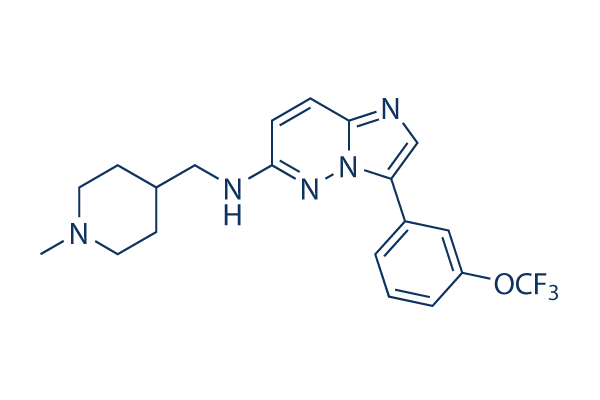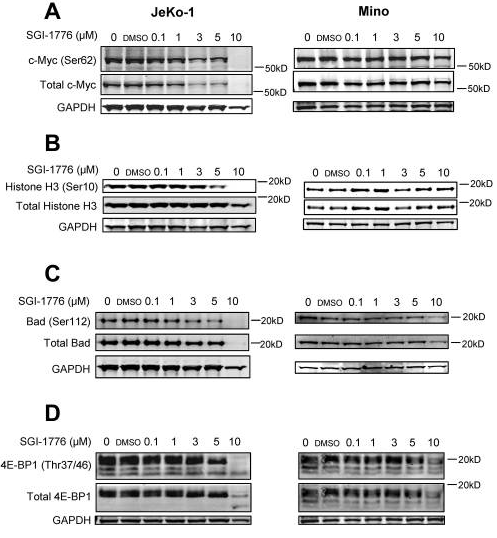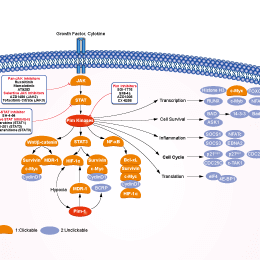
- Bioactive Compounds
- By Signaling Pathways
- PI3K/Akt/mTOR
- Epigenetics
- Methylation
- Immunology & Inflammation
- Protein Tyrosine Kinase
- Angiogenesis
- Apoptosis
- Autophagy
- ER stress & UPR
- JAK/STAT
- MAPK
- Cytoskeletal Signaling
- Cell Cycle
- TGF-beta/Smad
- DNA Damage/DNA Repair
- Compound Libraries
- Popular Compound Libraries
- Customize Library
- Clinical and FDA-approved Related
- Bioactive Compound Libraries
- Inhibitor Related
- Natural Product Related
- Metabolism Related
- Cell Death Related
- By Signaling Pathway
- By Disease
- Anti-infection and Antiviral Related
- Neuronal and Immunology Related
- Fragment and Covalent Related
- FDA-approved Drug Library
- FDA-approved & Passed Phase I Drug Library
- Preclinical/Clinical Compound Library
- Bioactive Compound Library-I
- Bioactive Compound Library-���
- Kinase Inhibitor Library
- Express-Pick Library
- Natural Product Library
- Human Endogenous Metabolite Compound Library
- Alkaloid Compound LibraryNew
- Angiogenesis Related compound Library
- Anti-Aging Compound Library
- Anti-alzheimer Disease Compound Library
- Antibiotics compound Library
- Anti-cancer Compound Library
- Anti-cancer Compound Library-���
- Anti-cancer Metabolism Compound Library
- Anti-Cardiovascular Disease Compound Library
- Anti-diabetic Compound Library
- Anti-infection Compound Library
- Antioxidant Compound Library
- Anti-parasitic Compound Library
- Antiviral Compound Library
- Apoptosis Compound Library
- Autophagy Compound Library
- Calcium Channel Blocker LibraryNew
- Cambridge Cancer Compound Library
- Carbohydrate Metabolism Compound LibraryNew
- Cell Cycle compound library
- CNS-Penetrant Compound Library
- Covalent Inhibitor Library
- Cytokine Inhibitor LibraryNew
- Cytoskeletal Signaling Pathway Compound Library
- DNA Damage/DNA Repair compound Library
- Drug-like Compound Library
- Endoplasmic Reticulum Stress Compound Library
- Epigenetics Compound Library
- Exosome Secretion Related Compound LibraryNew
- FDA-approved Anticancer Drug LibraryNew
- Ferroptosis Compound Library
- Flavonoid Compound Library
- Fragment Library
- Glutamine Metabolism Compound Library
- Glycolysis Compound Library
- GPCR Compound Library
- Gut Microbial Metabolite Library
- HIF-1 Signaling Pathway Compound Library
- Highly Selective Inhibitor Library
- Histone modification compound library
- HTS Library for Drug Discovery
- Human Hormone Related Compound LibraryNew
- Human Transcription Factor Compound LibraryNew
- Immunology/Inflammation Compound Library
- Inhibitor Library
- Ion Channel Ligand Library
- JAK/STAT compound library
- Lipid Metabolism Compound LibraryNew
- Macrocyclic Compound Library
- MAPK Inhibitor Library
- Medicine Food Homology Compound Library
- Metabolism Compound Library
- Methylation Compound Library
- Mouse Metabolite Compound LibraryNew
- Natural Organic Compound Library
- Neuronal Signaling Compound Library
- NF-��B Signaling Compound Library
- Nucleoside Analogue Library
- Obesity Compound Library
- Oxidative Stress Compound LibraryNew
- Plant Extract Library
- Phenotypic Screening Library
- PI3K/Akt Inhibitor Library
- Protease Inhibitor Library
- Protein-protein Interaction Inhibitor Library
- Pyroptosis Compound Library
- Small Molecule Immuno-Oncology Compound Library
- Mitochondria-Targeted Compound LibraryNew
- Stem Cell Differentiation Compound LibraryNew
- Stem Cell Signaling Compound Library
- Natural Phenol Compound LibraryNew
- Natural Terpenoid Compound LibraryNew
- TGF-beta/Smad compound library
- Traditional Chinese Medicine Library
- Tyrosine Kinase Inhibitor Library
- Ubiquitination Compound Library
-
Cherry Picking
You can personalize your library with chemicals from within Selleck's inventory. Build the right library for your research endeavors by choosing from compounds in all of our available libraries.
Please contact us at [email protected] to customize your library.
You could select:
- Antibodies
- Bioreagents
- qPCR
- 2x SYBR Green qPCR Master Mix
- 2x SYBR Green qPCR Master Mix(Low ROX)
- 2x SYBR Green qPCR Master Mix(High ROX)
- Protein Assay
- Protein A/G Magnetic Beads for IP
- Anti-Flag magnetic beads
- Anti-Flag Affinity Gel
- Anti-Myc magnetic beads
- Anti-HA magnetic beads
- Magnetic Separator
- Poly DYKDDDDK Tag Peptide lyophilized powder
- Protease Inhibitor Cocktail
- Protease Inhibitor Cocktail (EDTA-Free, 100X in DMSO)
- Phosphatase Inhibitor Cocktail (2 Tubes, 100X)
- Cell Biology
- Cell Counting Kit-8 (CCK-8)
- Animal Experiment
- Mouse Direct PCR Kit (For Genotyping)
- New Products
- Contact Us
SGI-1776 free base
SGI-1776 free base is a novel ATP competitive inhibitor of Pim1 with IC50 of 7 nM in a cell-free assay, 50- and 10-fold selective versus Pim2 and Pim3, also potent to Flt3 and haspin. SGI-1776 induces apoptosis and autophagy.

SGI-1776 free base Chemical Structure
CAS No. 1025065-69-3
Purity & Quality Control
Batch:
Purity:
99.81%
99.81
SGI-1776 free base Related Products
| Related Targets | Pim1 Pim2 Pim3 | Click to Expand |
|---|---|---|
| Related Products | AZD1208 PIM447 (LGH447) Hydrochloride SMI-4a CX-6258 HCl Uzansertib (INCB053914) TP-3654 Hispidulin SMI-16a | Click to Expand |
| Related Compound Libraries | Kinase Inhibitor Library FDA-approved Drug Library Natural Product Library Tyrosine Kinase Inhibitor Library JAK/STAT compound library | Click to Expand |
Signaling Pathway
Cell Data
| Cell Lines | Assay Type | Concentration | Incubation Time | Formulation | Activity Description | PMID |
|---|---|---|---|---|---|---|
| CHO cells | Function assay | Inhibition of human ERG expressed in CHO cells by automated patch clamp method, IC50=1 ��M | 25589932 | |||
| Click to View More Cell Line Experimental Data | ||||||
Biological Activity
| Description | SGI-1776 free base is a novel ATP competitive inhibitor of Pim1 with IC50 of 7 nM in a cell-free assay, 50- and 10-fold selective versus Pim2 and Pim3, also potent to Flt3 and haspin. SGI-1776 induces apoptosis and autophagy. | ||||||||
|---|---|---|---|---|---|---|---|---|---|
| Targets |
|
| In vitro | ||||
| In vitro | In addition to Pim, SGI-1776 also potently targets FLT3 (IC50 = 44nM). Treatment of AML cells with SGI-1776 results in a concentration-dependent induction of apoptosis. Importantly, SGI-1776 is also cytotoxic in AML primary cells, irrespective of FLT3 mutation status and results in Mcl-1 protein decline. [1]Treatment of CLL cells with SGI-1776 results in a concentration-dependent induction of apoptosis. SGI-1776 induces apoptosis in CLL and that the mechanism involves Mcl-1 reduction. Apoptosis induction coupled with the inhibition of RNA synthesis is observed in CLL cells treated with SGI-1776. [2] SGI-1776 exhibites cytotoxic activity in vitro with a median relative IC50 of 3.1 mM. SGI-1776 induces tumor growth inhibition meeting criteria for intermediate EFS T/C activity in 1 of 39 evaluable models. In contrast, SGI-1776 induces complete responses of subcutaneous MV4;11. [3] |
|||
|---|---|---|---|---|
| Kinase Assay | Kinase Assays | |||
| Kinase inhibition is measured by the use of radiometric assays performed by KinaseProfiler service. Assays contain a peptide substrate, known purified recombinant human kinases, gamma-labeled ATP, magnesium ion, and a fixed concentration (1 ��M) of SGI-1776. In a final reaction volume of 25 ��L, 5 to 10 mU of Pim1/2/3 is incubated with 8 mM of MOPS, pH 7.0; 0.2 mM ethylene diamine tetraacetic acid; 100 ��M KKRNRTLTV;10 mM MgAcetate; and [��-32P-ATP] . The reaction is initiated by the addition of the MgATP mix. After incubation for 40 minutes at room temperature, the reaction is stopped by the addition of 5 ��L of a 3% phosphoric acid solution. Then, 10 ��L of the reaction is spotted onto a P30 filtermat and washed 3 times for 5 minutes in 75 mM phosphoric acid and once in methanol before it is dried and measured via a scintillation counter. | ||||
| Cell Research | Cell lines | MV-4-11, MOLM-13, and OCI-AML-3 cell lines | ||
| Concentrations | 0.1-10 ��M | |||
| Incubation Time | 24 hours | |||
| Method | Cells are cultured in IMDM (ATCC) supplemented with 10% FBS and grown in a 37oC incubator with 5% CO2. Cells are routinely tested for Mycoplasma infection using a commercially available kit. Cells are treated with DMSO or various concentrations of SGI-1776 for 24 hours. Cells (1×106) are washed, then resuspended in 100 μL of annexin binding buffer, mixed with 5 μL of FITC solution and 5 μL of propidium iodide (PI; 50 μg/mL) solution. For each sample, 1×104 cells are measured using a Becton Dickinson FACSCalibur flow cytometer. |
|||
| Experimental Result Images | Methods | Biomarkers | Images | PMID |
| Western blot | c-Myc (Ser62) / c-Myc / p-Histone H3 (Ser10) / Histone H3 / Bad(Ser112) / Bad / 4E-BP1 Mcl-1 Cell viability p70-S6K / p-P70S6K / rpS6 / p-rpS6 |

|
22955922 | |
| In Vivo | ||
| In vivo | Consistent with cell line data, xenograft model studies with mice bearing MV-4-11 tumors shows efficacy with SGI-1776. [1] SGI-1776 has shown preclinical activity against leukemia and solid tumor cell line models with IC50 values of 0.005–11.68 mM. SGI-1776 induces significant differences in EFS distribution in vivo in 9 of 31 solid tumor xenografts and in 1 of 8 of the evaluable ALL xenografts. [3] |
|
|---|---|---|
| Animal Research | Animal Models | Female cNOD-SCID mice |
| Dosages | 75 mg/kg and 200 mg/kg | |
| Administration | Administered via oral gavage (PO) on a daily ��5/week or twice/week schedu | |
Chemical Information & Solubility
| Molecular Weight | 405.42 | Formula | C20H22F3N5O |
| CAS No. | 1025065-69-3 | SDF | Download SGI-1776 free base SDF |
| Smiles | CN1CCC(CC1)CNC2=NN3C(=NC=C3C4=CC(=CC=C4)OC(F)(F)F)C=C2 | ||
| Storage (From the date of receipt) | |||
|
In vitro |
DMSO : 81 mg/mL ( (199.79 mM) Moisture-absorbing DMSO reduces solubility. Please use fresh DMSO.) Ethanol : 81 mg/mL Water : Insoluble |
Molecular Weight Calculator |
|
In vivo Add solvents to the product individually and in order. |
In vivo Formulation Calculator |
||||
Preparing Stock Solutions
Molarity Calculator
In vivo Formulation Calculator (Clear solution)
Step 1: Enter information below (Recommended: An additional animal making an allowance for loss during the experiment)
mg/kg
g
��L
Step 2: Enter the in vivo formulation (This is only the calculator, not formulation. Please contact us first if there is no in vivo formulation at the solubility Section.)
% DMSO
%
% Tween 80
% ddH2O
%DMSO
%
Calculation results:
Working concentration: mg/ml;
Method for preparing DMSO master liquid: mg drug pre-dissolved in ��L DMSO ( Master liquid concentration mg/mL, Please contact us first if the concentration exceeds the DMSO solubility of the batch of drug. )
Method for preparing in vivo formulation: Take ��L DMSO master liquid, next add��L PEG300, mix and clarify, next add��L Tween 80, mix and clarify, next add ��L ddH2O, mix and clarify.
Method for preparing in vivo formulation: Take ��L DMSO master liquid, next add ��L Corn oil, mix and clarify.
Note: 1. Please make sure the liquid is clear before adding the next solvent.
2. Be sure to add the solvent(s) in order. You must ensure that the solution obtained, in the previous addition, is a clear solution before proceeding to add the next solvent. Physical methods such
as vortex, ultrasound or hot water bath can be used to aid dissolving.
Tech Support
Answers to questions you may have can be found in the inhibitor handling instructions. Topics include how to prepare stock solutions, how to store inhibitors, and issues that need special attention for cell-based assays and animal experiments.
Tel: +1-832-582-8158 Ext:3
If you have any other enquiries, please leave a message.
* Indicates a Required Field
Tags: buy SGI-1776 free base | SGI-1776 free base supplier | purchase SGI-1776 free base | SGI-1776 free base cost | SGI-1776 free base manufacturer | order SGI-1776 free base | SGI-1776 free base distributor







































